Succulents are one of the most popular houseplants and for a good reason! They’re easy to care for, come in a huge variety of shapes and sizes, and can even tolerate a little neglect. But one question we get a lot is, “How big do succulents get?”
The answer to that question is, unfortunately, a little bit complicated. You see, there are hundreds of different types of succulents, and they can range in size from just a few inches to several feet tall. So, if you’re looking for a specific answer, you’ll need to do a little research on the type of succulent you’re interested in.
In general, however, most succulents will only get as big as the pot they’re in. And, of course, you can always prune your succulent to keep it at the size you want. We’ll talk about all of these in this blog post, including the succulents’ growing factors and succulent growing tips.
So, let’s get started!

What Are Succulents?
Succulents are a type of plant that have thick, fleshy leaves or stems. They can store water in these leaves or stems, which is why they are often found in arid or desert climates.
Succulents come in a wide variety of shapes and sizes and can be either annual or perennial plants. Some common varieties of succulents include cacti, aloe vera, and sedums.
Succulents are a popular choice for indoor plants, as they are easy to care for and require little water. They can be placed in a sunny spot and will thrive with minimal watering.
In addition to being low-maintenance, succulents are also very versatile. They can be planted in a traditional pot, container, or even in a hanging basket. They make a great addition to any indoor or outdoor space and can even be used as part of a living wall.
Factors That Influence the Size of Succulents
When it comes to succulents, size definitely matters. There are a number of factors that can affect the size of your succulent, from the type of plant to the growing conditions. Here are a few things to keep in mind when trying to determine how big your succulent will grow.
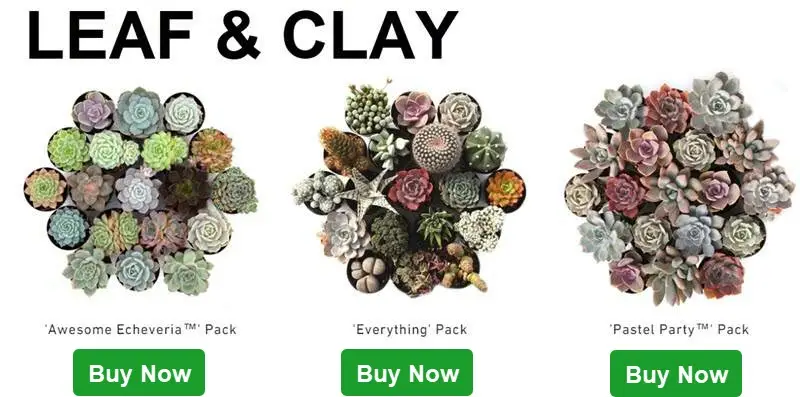
1. Type of Plant
One of the biggest factors in succulent size is the type of plant. Some succulents, like echeverias, belong to the smaller breed, while others, like kalanchoes, can grow to be quite large. If you’re not sure how big a
particular type of succulent will get, ask your nursery or do some research online.
2. Growing Conditions
The growing conditions of your succulent can also affect its size. If you’re growing your succulent indoors, it will likely stay on the smaller side. This is because indoor conditions are often less than ideal for succulents, with lower light levels and less airflow. Outdoor succulents, on the other hand, grow much larger as they’ll have access to abundant sunlight and fresh air.
3. Pot Size
Another factor to consider is the pot size. A larger pot will allow your succulent to grow to a larger size, while a smaller pot will limit its growth. If you’re not sure what size pot to use, your horticulturist may be a resource that can answer your query or study botanical blogs related to these topics.
Recommended Succulent Pots
| Image | Title | Prime | Buy |
|---|---|---|---|
 | Succulent Pots, ZOUTOG White Mini 3.15 inch Ceramic Flower Planter Pot with Bamboo Tray, Pack of 6 - Plants Not Included | PrimeEligible | Check My Price on Amazon |
Top | 12 Pack Succulent Pots, 2.6 Inch ZOUTOG Mini Ceramic Pots for Flower or Cactus with Drainage Hole, Small Pots for Plants, Plants Not Included | PrimeEligible | Check My Price on Amazon |
 | Succulent Pots, White Ceramic Pots for Plants Set of 6 Succulent Planters with Drainage Tray Bamboo Small Plant Pots 3 Inch Planter Pots Cactus Mini Flowers Pots with Saucer Garden Pots (White) | PrimeEligible | Check My Price on Amazon |
 | Succulent Pots, ZOUTOG 6 inch White Ceramic Flower Planter Pot with Bamboo Tray, Pack of 2 - Plants Not Included | PrimeEligible | Check My Price on Amazon |
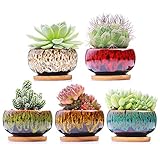 | Cute Ceramic Succulent Garden Pots, Planter with Drainage and Attached Saucer, Set of 5 -Plants Not Included (Round) | PrimeEligible | Check My Price on Amazon |
 | Peohud 6 Pack Succulent Pots, 3 Inch Ceramic Cactus Pots, Small Flower Planter Pot with Drainage Hole and Bamboo Tray for Indoor, Outdoor Garden | PrimeEligible | Check My Price on Amazon |
4. Fertilizer
Fertilizers can also affect the succulent size. If you fertilize your succulent regularly, it will likely grow to be larger than if you don’t fertilize it at all. However, you don’t want to over-fertilize, as this can damage the plant.
As you can see, there are several factors that can affect the size of your succulent. Keep these things in mind when you’re choosing a plant and pot size, and you’ll be on your way to growing a healthy, happy succulent.
How Big Do Succulents Get?
While these plants come in a wide variety of shapes and sizes, most succulents are relatively small. However, there are a few species that can grow quite large.
Size of the Biggest Succulents
- One of the largest succulents is the elephant’s foot (Pachycormus discolor). This plant is native to Mexico and can grow up to 6 feet (1.8 m) tall. It has a thick, trunk-like stem that is covered in dark green leaves. The leaves are fleshy and have a waxy coating that helps to prevent water loss.
- Another large succulent is the jellybean plant (Sedum rubrotinctum). This plant is native to Mexico and can grow up to 2 feet (0.6 m) tall. It has small, oval-shaped leaves that are green in color with red edges. The jellybean plant gets its name from its small, round, red fruits that resemble jellybeans. These fruits are edible, but they are not very tasty.
- The tree aloe (Aloe barbadensis) is another large succulent. This plant is native to Africa and can grow up to 3 feet tall. It has a thick, trunk-like stem that is covered in green leaves. The leaves are fleshy and have a sharp, tooth-like margin.
- The Jade Plant (Crassula ovata) is the largest member of the Crassulaceae family. It can grow up to 1.5m (5 ft) tall and has a diameter of up to 1m (3.3 ft).
These large succulent plants are popular houseplants and are often used as landscape plants in warm climates.
Size of the Small Succulents
One of the most common questions we get asked about small succulents is, “how big do they get?”
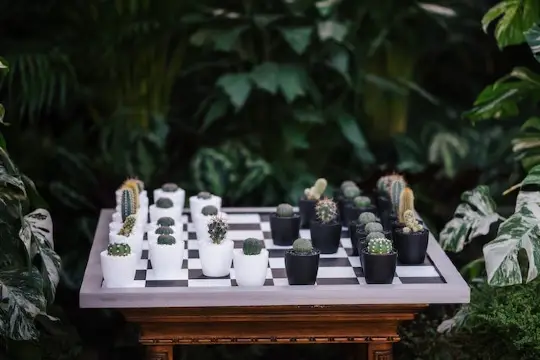
Small succulents are typically very slow-growing plants. Most will stay fairly small, only reaching about 6 inches in height and width at maturity. There are, however, a few species that can grow slightly larger.
If you’re looking for a succulent that stays on the smaller side, some good options include echeverias, sedums, and crassulas. These varieties typically max out at around 6 inches in height and width.
Of course, there are always exceptions to the rule. Some small succulents, such as sempervivums, can actually get quite large – up to 2 feet tall and wide in some cases! Others, like the kalanchoe, can grow to be a few feet tall. And then there are plants like the crassula, which can grow to be over 3-6 feet tall!
Here’s a list of some of the smallest succulent plants and their sizes:
- Echeveria Lola – This diminutive echeveria stays small at only 4-6 inches wide. Its leaves are a beautiful rosy hue, and it produces yellow flowers in the spring.
- Sedum Morganianum – It reaches a maximum length of about 3 feet, but individual stems are only about an inch wide.
- Aeonium Firecracker – Aeoniums are known for their showy rosettes, and the Firecracker variety is no exception. It grows to be about 4-6 inches wide, with red or orange leaves that turn green in the center.
- Haworthia Cooperi – This little succulent is only about 3-4 inches wide, but its leaves are fascinating up close. They’re translucent, so you can actually see the tiny greenish-white flowers that bloom inside the rosette.
- Crassula Rupestris – It grows to be about 4-6 inches tall and wide, with blue-green leaves that are edged in red.
- Kalanchoe Humilis – Kalanchoes are known for their clusters of colorful flowers. It only gets to be about 4 inches wide, but it can produce yellow, red, or orange flowers.
- Lithops Bromfieldii – Lithops are often called “living stones” because their leaves look like they’re made of stone. The Bromfieldii variety is one of the smallest, reaching a height of only about 2 inches.
- Portulacaria Afra – It grows to be about 2-4 feet tall, but individual stems are only about an inch wide.
- Sansevieria Trifasciata – This is the plant that’s commonly known as the snake plant. It stays relatively small, only reaching 2-3 feet in height.
- Sempervivum Hirtum – Sempervivum Hirtum is a low-growing succulent that only reaches about 4 inches in height.
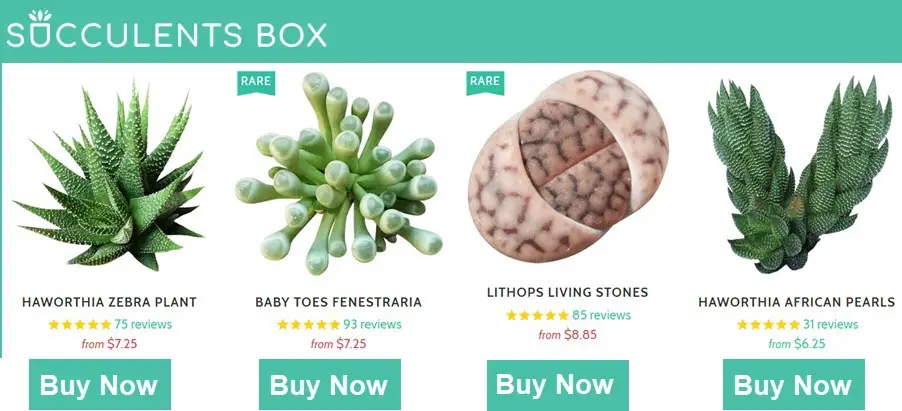
So, as you can see, the answer to the question of how big do small succulents get is quite variable. It really depends on the species of plant in question.
In general, small succulents are easy to care for and make great houseplants. They are perfect for those who are new to these plants, as they are low-maintenance and easy to keep alive.
How Big Do Succulents Get Indoors?
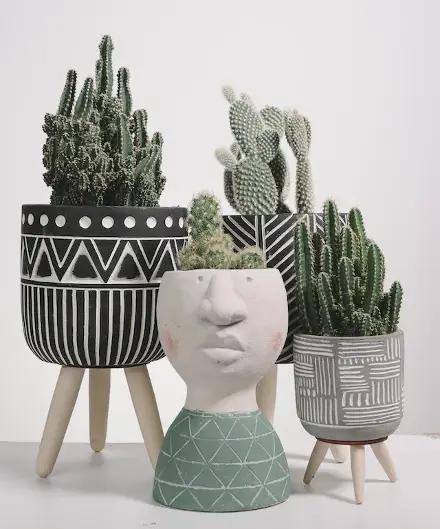
The biggest factor affecting succulents’ size other than the species is whether you’re growing them indoors or outdoors!
Assuming you are referring to common houseplants such as jade plants, aloe vera, and snake plants, most will not grow to more than 3 feet in height. Some can get slightly larger, but if you are growing them indoors, you will likely need to provide some type of support, such as a stake or trellis.
Jade plants can get up to about 3 feet tall, but they are slow growers, so it will take some time to get them to that size. Aloe vera plants can also get up to 3 feet tall, but they are also slow growers. Snake plants can get a bit larger, up to 4 feet tall.
If you are looking for a larger succulent to grow indoors, you could try a Kalanchoe, which can get up to 5 feet tall. However, Kalanchoes are fast growers, so you will need to provide them with plenty of room to spread out.
Regardless of the type of succulent you choose, remember that they all prefer bright, indirect sunlight. Too much direct sunlight will cause the leaves to scorch, so if you are growing them indoors, place them near a window where they will get bright, indirect light.
Why Is My Succulent Not Growing?
If your succulent is not growing, there are a few potential reasons:
- The most common reason is that the plant is not getting enough light. Succulents need a lot of light to grow, so if yours is in a shady spot, it may not be getting enough light.
- Another potential reason is that the plant is not getting enough water. Succulents need to be watered once a week, but they also need to have good drainage. If the plant is sitting in water, it will not grow.
- The soil might not be right for succulents. Succulents need well-draining soil, so if your soil is too dense or doesn’t drain well, your succulent might have problems growing.
- Finally, the plant may not be getting enough nutrients. If the soil is not fertilized, the plant will not have the nutrients it needs to grow.
If you’re not sure what the problem is, you can always ask a succulent expert for help. (See: Should I cut the brown tips off my Aloe plant?)
Recommended Succulents on Amazon
| Image | Title | Prime | Buy |
|---|---|---|---|
 | Live Succulent 4" Othonna Capensis Ruby Necklace, Succulents Plants Live, Succulent Plants Fully Rooted, House Plant for Home Office Decoration, DIY Projects, Party Favor Gift by The Succulent Cult | Prime | Check My Price on Amazon |
Top | Altman Plants, Live Succulent Plants (20 Pack) Assorted Potted Succulents Plants Live House Plants in Cacti and Succulent Soil Mix, Cactus Plants Live Indoor Plants Live Houseplants in Planter Pots | PrimeEligible | Check My Price on Amazon |
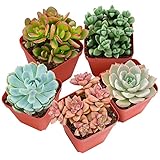 | Live Succulent Plants, 5 Pack Assorted Real Succulents Potted in 2" Starter Planter with Soil Mix, Rare Small Indoor House Plants for Home Garden Wedding Decor Party Favor DIY Gift | Prime | Check My Price on Amazon |
 | Succulents Plants Live (6PK) Potted Succulent Plants Live House Plants, Cactus Plants Live Plants Indoor Plants Live Houseplants, Indoor Plant Succulents Live Plant House Plant by Plants for Pets | PrimeEligible | Check My Price on Amazon |
 | 3pcs Owl Succulent Pots with 3 Tier Bamboo Saucers Stand Holder - White Modern Decorative Ceramic Flower Planter Plant Pot with Drainage - Home Office Desk Garden Mini Cactus Pot Indoor Decoration | PrimeEligible | Check My Price on Amazon |
 | Altman Plants Assorted Live Succulents Desk Buddy Collection Easy Care Plants for Indoor, Office, Kitchen, 2.5", 4 Pack | PrimeEligible | Check My Price on Amazon |
How to Care for Your Succulent: Succulent Growing Factors
These trendy plants are actually quite easy to take care of, as long as you understand their basic needs.
Here are some tips on how to care for your plant:
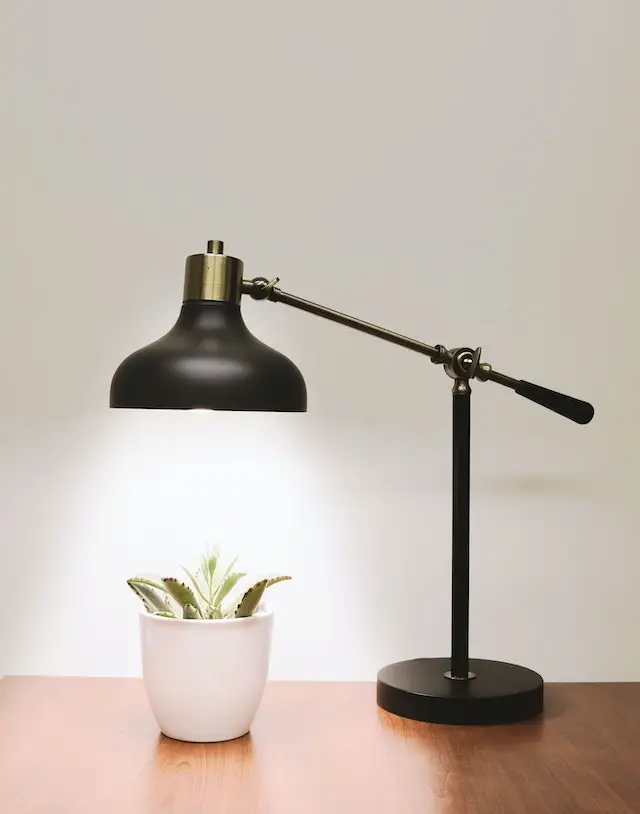
1. Light
Succulents need bright, indirect sunlight to thrive. If your plant is not getting enough light, it will start to stretch out and become leggy. Too much direct sunlight can actually burn your plant, so be sure to find a happy medium.
If you’re having trouble finding a spot in your home that gets the right amount of light, you can always grow your plant under a grow light.
Recommended Grow Lights
| Image | Title | Prime | Buy |
|---|---|---|---|
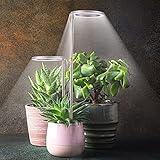 | Upgraded Double Head LED Succulents Grow Light Set- Adjustable Annular Light 5V 3A Full Spectrum Plant Growing Lamp with 24H Timer USB Charging Extendable Supporter for Garden Indoor Plant Seed Start | PrimeEligible | Check My Price on Amazon |
Top | T5 Grow Lights 1.4Ft, 5000K White Full Spectrum LED Plant Growing Lamp Strips for Indoor Plants, Seeds Starting, Succulents, High PPFD with V-Shaped Reflector | PrimeEligible | Check My Price on Amazon |
 | LED Plant Grow Light with Stand,WTINTELL LED Grow Light Full Spectrum for Indoor Plants,10 Dimmable Levels,3 Modes Timing,Tripod Adjustable 15-72 inch. | PrimeEligible | Check My Price on Amazon |
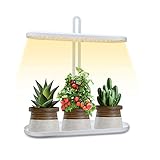 | GoGrow Grow Light LED Plant Light for Indoor Plants, New Generation Desk Grow Light with Timer, Plant Light, Grow Lamp Growing Lights Full Spectrum UV Grow Lights | PrimeEligible | Check My Price on Amazon |
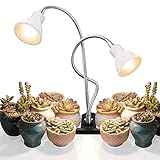 | Clip on Grow Lights,ACKE Plant Light Full Spectrum,LED Clamp Spotlight with Timer for Indoor Plants Growing | PrimeEligible | Check My Price on Amazon |
 | 2 Pack Grow Light Strips, 102 LED-Bulbs White Full Spectrum Plant Light for Indoor Plants Growing Seedling Succulent Greenhouse, Expandable Design with V-Shaped Reflector | PrimeEligible | Check My Price on Amazon |
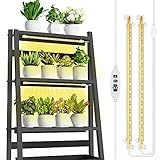 | Grow Light Strip, WEEGrow Grow Lights for Indoor Plants, Full Spectrum LED Grow Light,Plant Light with Auto ON/Off Timer 10 Dimmable Levels 3 Switch Modes, Grow Lamp for Hydroponics Succulent, 2 Pack | PrimeEligible | Check My Price on Amazon |
2. Water
One of the most common reasons why these types of plants die is because of overwatering. They store water in their leaves, so you don’t need watering very often.
In fact, it’s best to err on the side of underwatering. If you notice that the soil is completely dry, that is the only time that you should water your plant. When you do water, make sure to give your plant a good soaking so that the water can reach the roots.
3. Soil
Succulents need well-draining soil to thrive. If your plant is sitting in waterlogged soil, the roots will start to rot, and your plant will eventually die.
To make sure your soil is well-draining, you can mix it with some perlite or sand. You can also buy cactus and succulent potting mix at your local nursery or online.
4. Fertilizer
Succulents don’t need a lot of fertilizer, but they will benefit from a light feeding every now and then. Use a succulent-specific fertilizer or a general-purpose fertilizer diluted to half-strength.
Fertilize your plant every other month during the growing season (spring and summer), and then skip fertilizing during the fall and winter.
Recommended Fertilizer
| Image | Title | Price | Prime | Buy |
|---|---|---|---|---|
 | Miracle-Gro Succulent Plant Food, 8 oz., For Succulents including Cacti, Jade, And Aloe, 2 Pack | PrimeEligible | Check My Price on Amazon | |
Top | Succulents & Cactus Plant Food - Gentle Long Lasting Formula, Slow Release Fertilizer (Liquid Alternative) for All Potted Succulent, Cacti & Aloe Vera Plants (5 oz) | PrimeEligible | Check My Price on Amazon | |
 | Schultz Cactus Plus 2-7-7 liquid Plant Food, 4-Ounce (2-Pack) | PrimeEligible | Check My Price on Amazon | |
 | Espoma Cactus! Liquid Plant Food, Natural & Organic Succulent Plant Food, 8 fl oz, Pack of 4 | PrimeEligible | Check My Price on Amazon | |
 | Houseplant Hero Cactus and Succulent Plant Food - 2-7-7 House Plant Fertilizer (8 Ounces) | PrimeEligible | Check My Price on Amazon | |
 | Perfect Plants Liquid Cactus & Succulent Fertilizer 8oz. | Food for Live Succulents, Cacti, Aloe & More | Indoor and Outdoor Use with Every Watering | PrimeEligible | Check My Price on Amazon | |
 | Succulent Fertilizer | Formulated Succulent Food for Potted Indoor Succulents and Cactus | Plant Food for Succulent Soil in Pots | by Aquatic Arts | PrimeEligible | Check My Price on Amazon | |
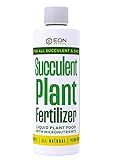 | EON NATURAL Succulent Plant Food | 8 oz Organic Succulent Fertilizer | Cactus Plant Food | All Purpose Succulent + Cactus + Snake + Aloe Liquid Soil | Indoor Plant Fertilizer Food for Potted Plants | PrimeEligible | Check My Price on Amazon |
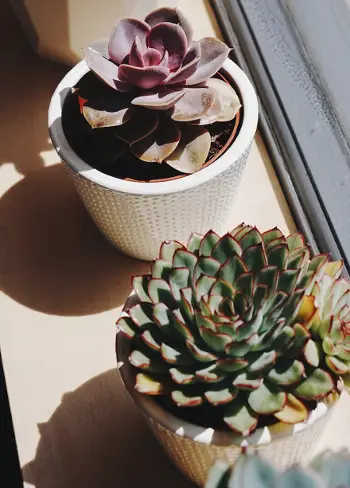
5. Temperature
These plants are pretty tolerant when it comes to temperature, but they prefer warm weather. If you live in a colder climate, you can grow your plant indoors near a sunny window.
Just make sure the temperature doesn’t drop below 50 degrees Fahrenheit (10 degrees Celsius).
6. Pests
Succulents are relatively pest-free, but can sometimes be susceptible to mealybugs, aphids, and scale. If you see any pests on your plant, you can remove them by hand or spray them with insecticidal soap.
7. Propagation
One of the best things about succulents is that they’re easy to propagate. You can propagate succulents from leaves or cuttings.
To propagate from a leaf or a cutting, simply remove a leaf from the plant or cut a piece of the stem off the plant and allow it to develop a callous over a few days. Once the leaf or cutting is calloused, you can plant it in some well-draining soil.
You may also be interested in… Fastest Growing Succulent Plants
Conclusion
If you’re looking for a low-maintenance plant that comes in a wide range of sizes, shapes, and colors, you can’t go wrong with succulents. While they vary greatly in size, most succulents stay relatively small, making them perfect for indoor gardens and terrariums.
On the question of “how big do succulents get,” Some common varieties, like echeveria and sedum, rarely get bigger than 6 inches. However, there are a few exceptions, like kalanchoe and aloe, which can grow quite large.
With proper care, they can live for years and even flower. Follow the tips in this article to ensure your succulents stay healthy and thrive.
FAQs
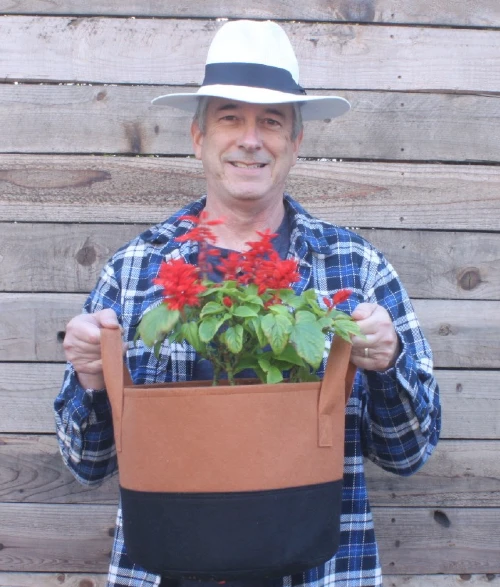
Darrell has a passion for gardening that he inherited from his father. Go here to read more about the influence his father played in his love for gardening. If you want to send Darrell a quick message, then visit his contact page here.
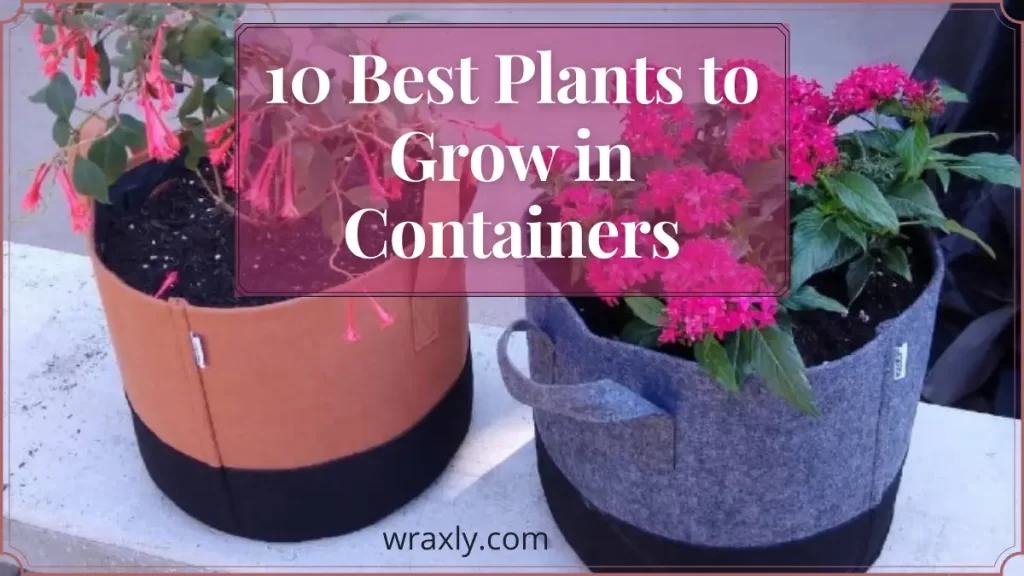
![How to Water Indoor Plants [Plant Care 101]](https://wraxly.com/wp-content/uploads/2021/03/How-to-Water-Indoor-Plants-Plant-Care-101-1200-1024x576.webp)
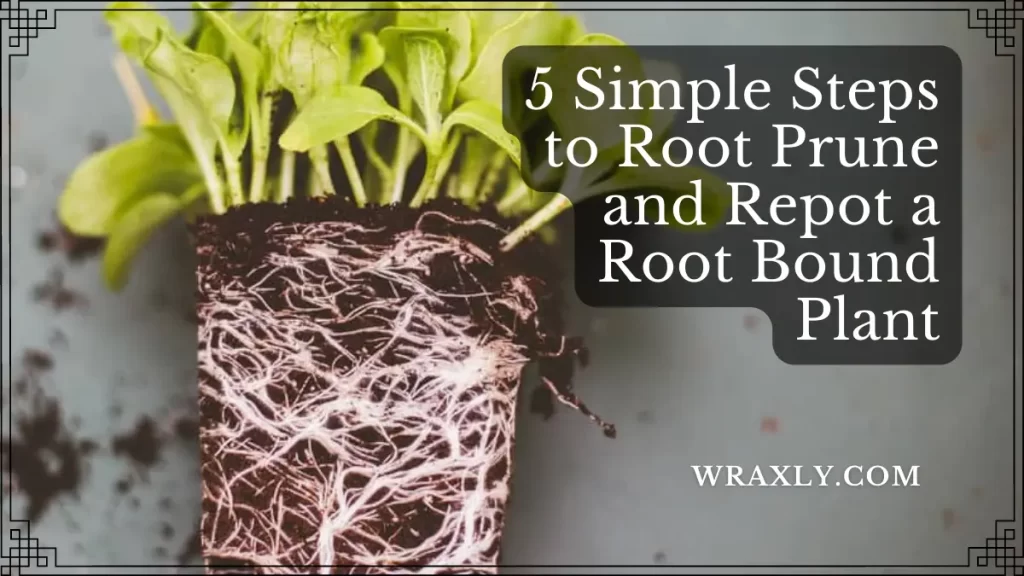
![Growing Plants from Cuttings [A Simple Guide]](https://wraxly.com/wp-content/uploads/2021/03/Growing-Plants-from-Cuttings-A-Simple-Guide-1200-1024x576.webp)